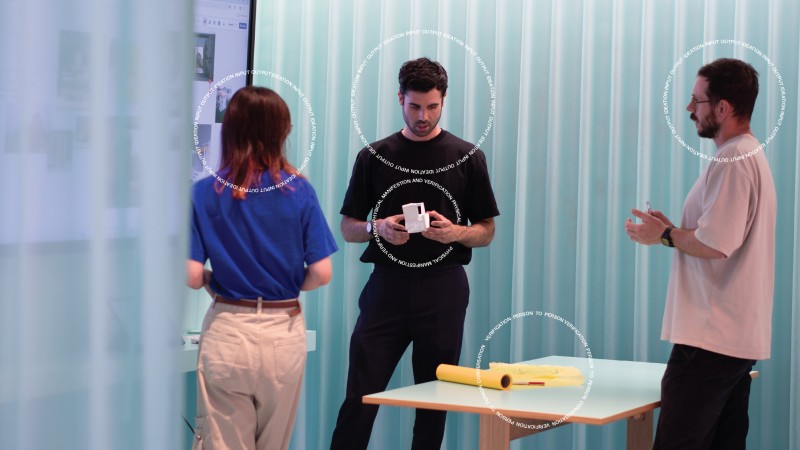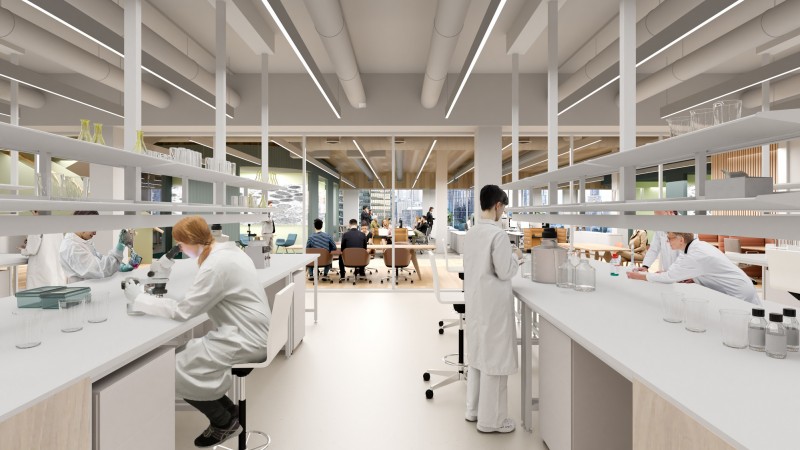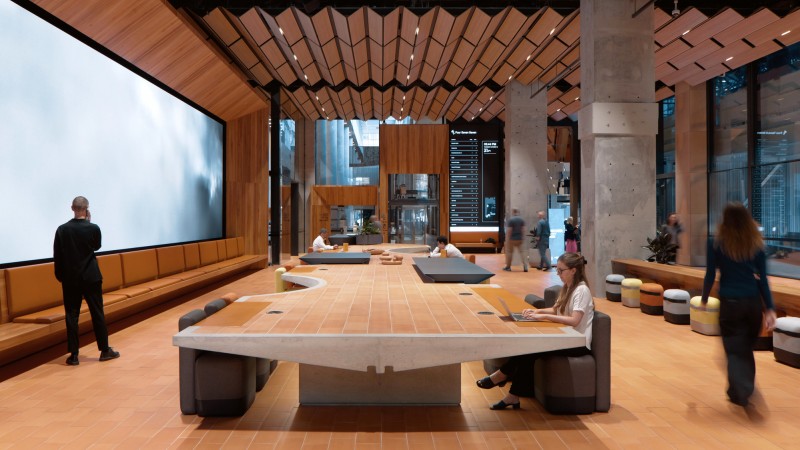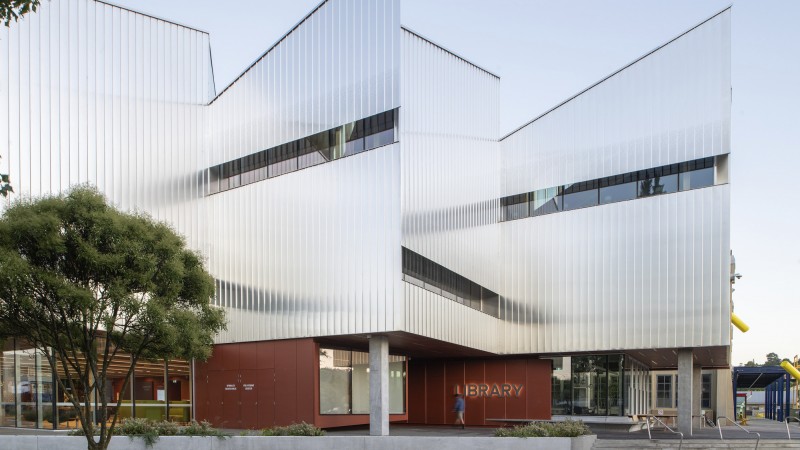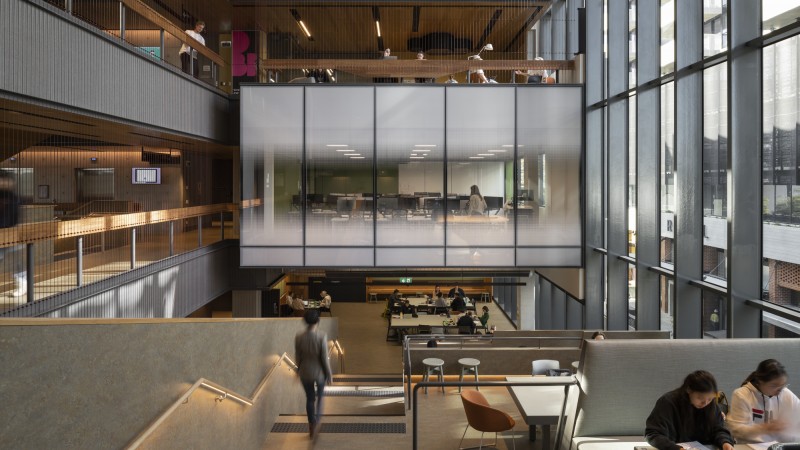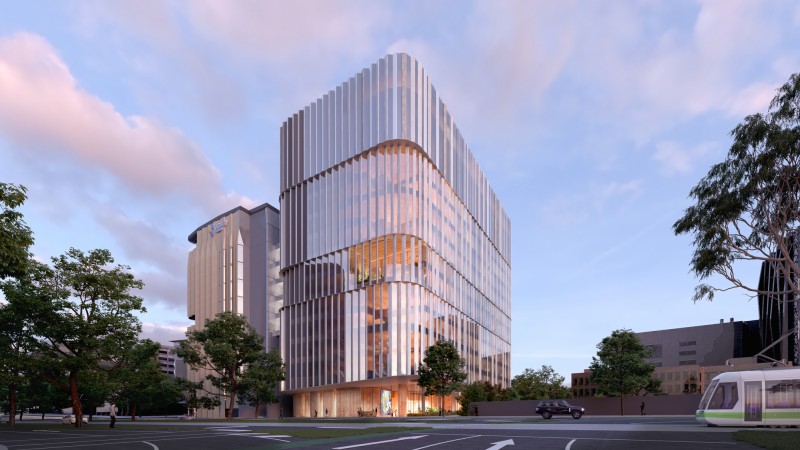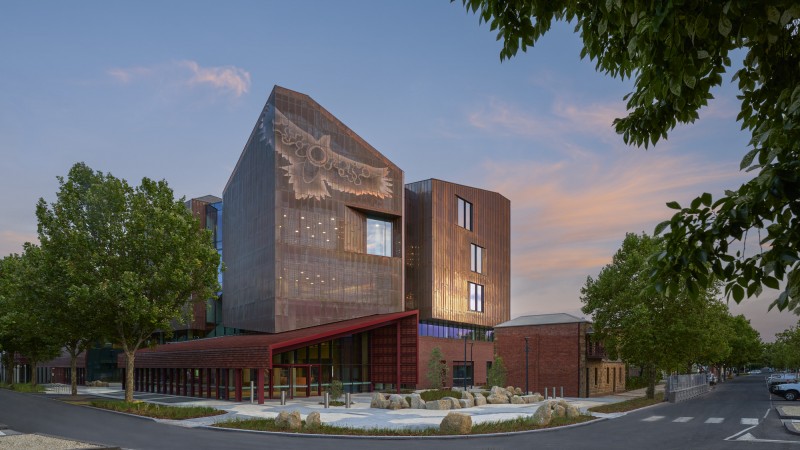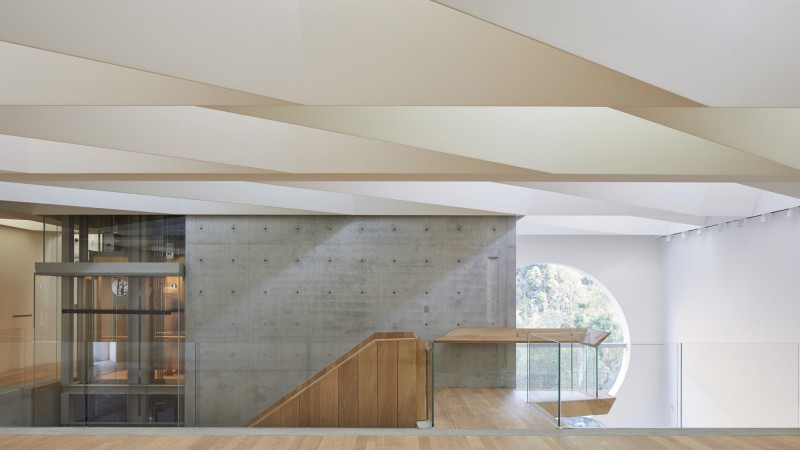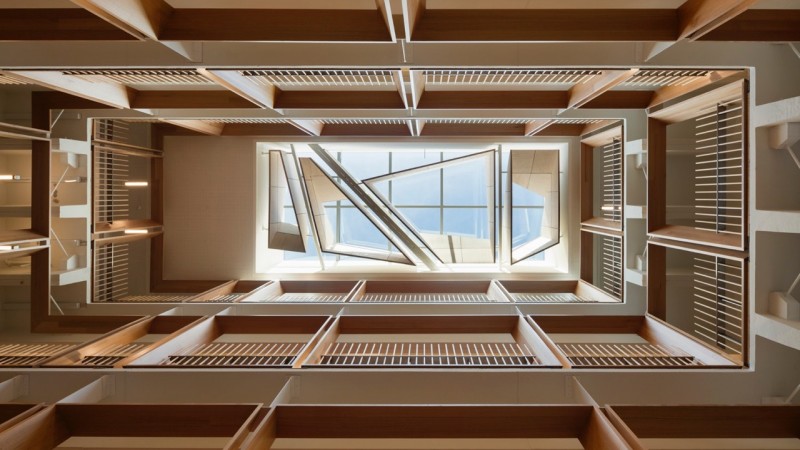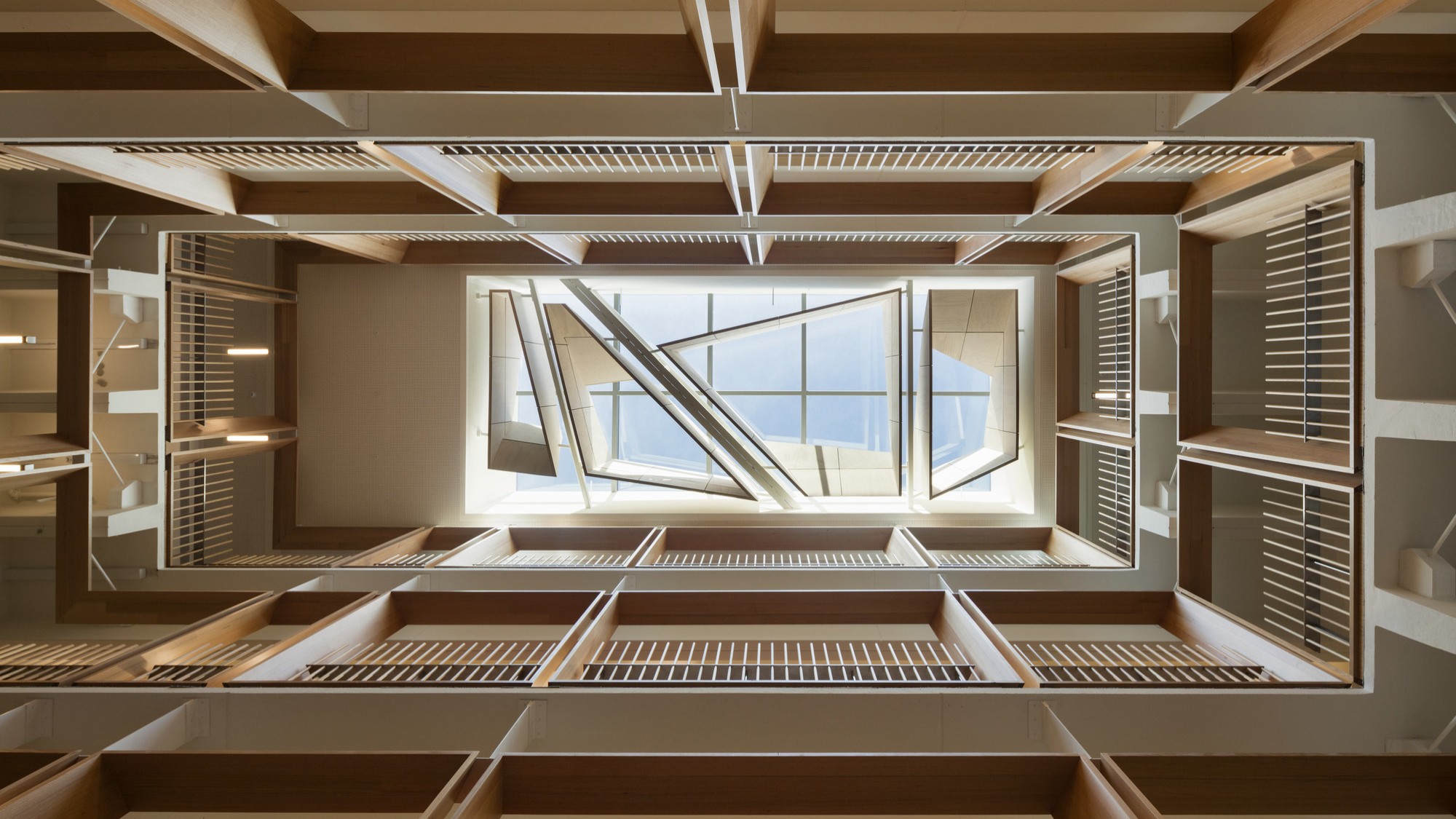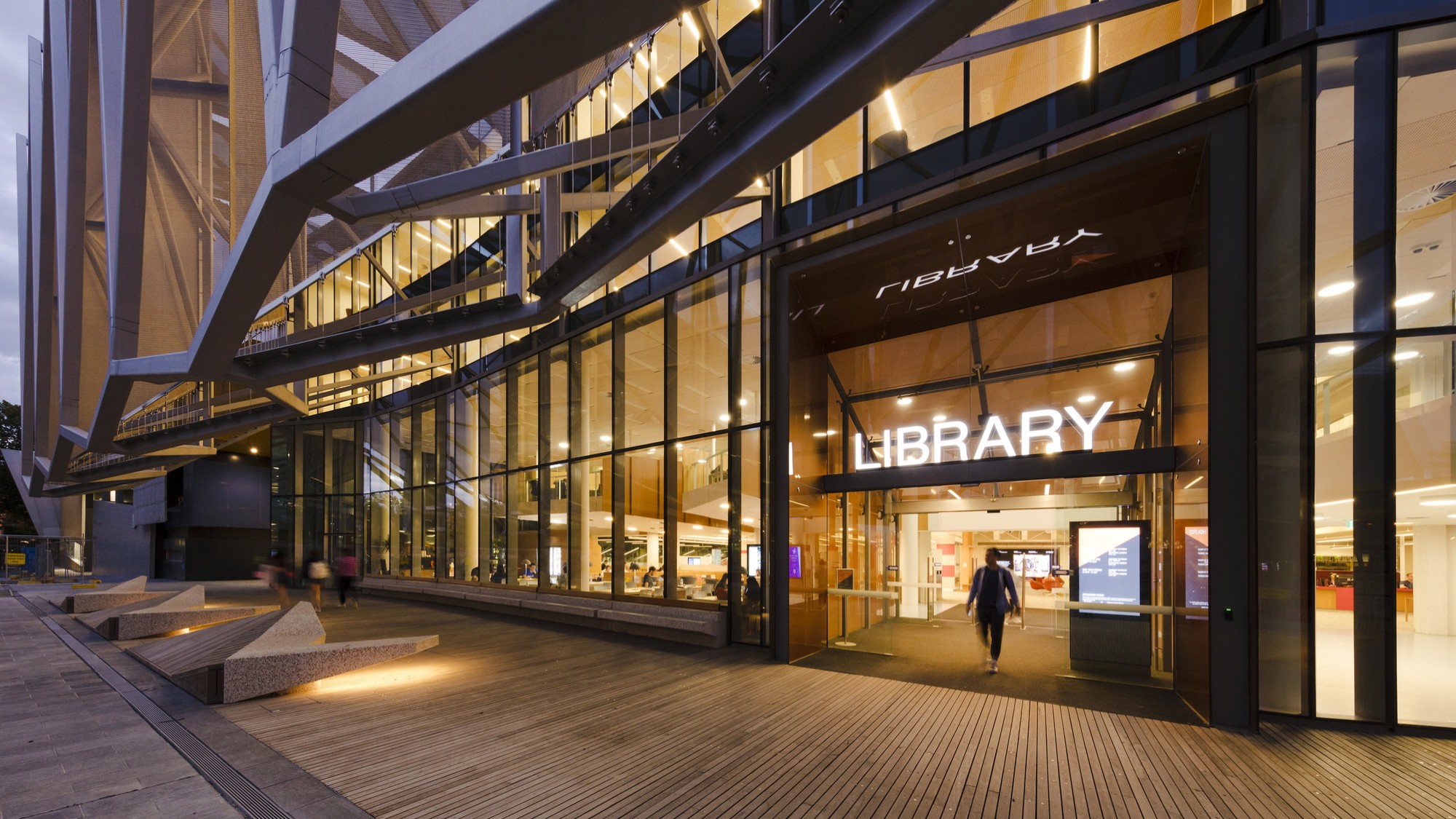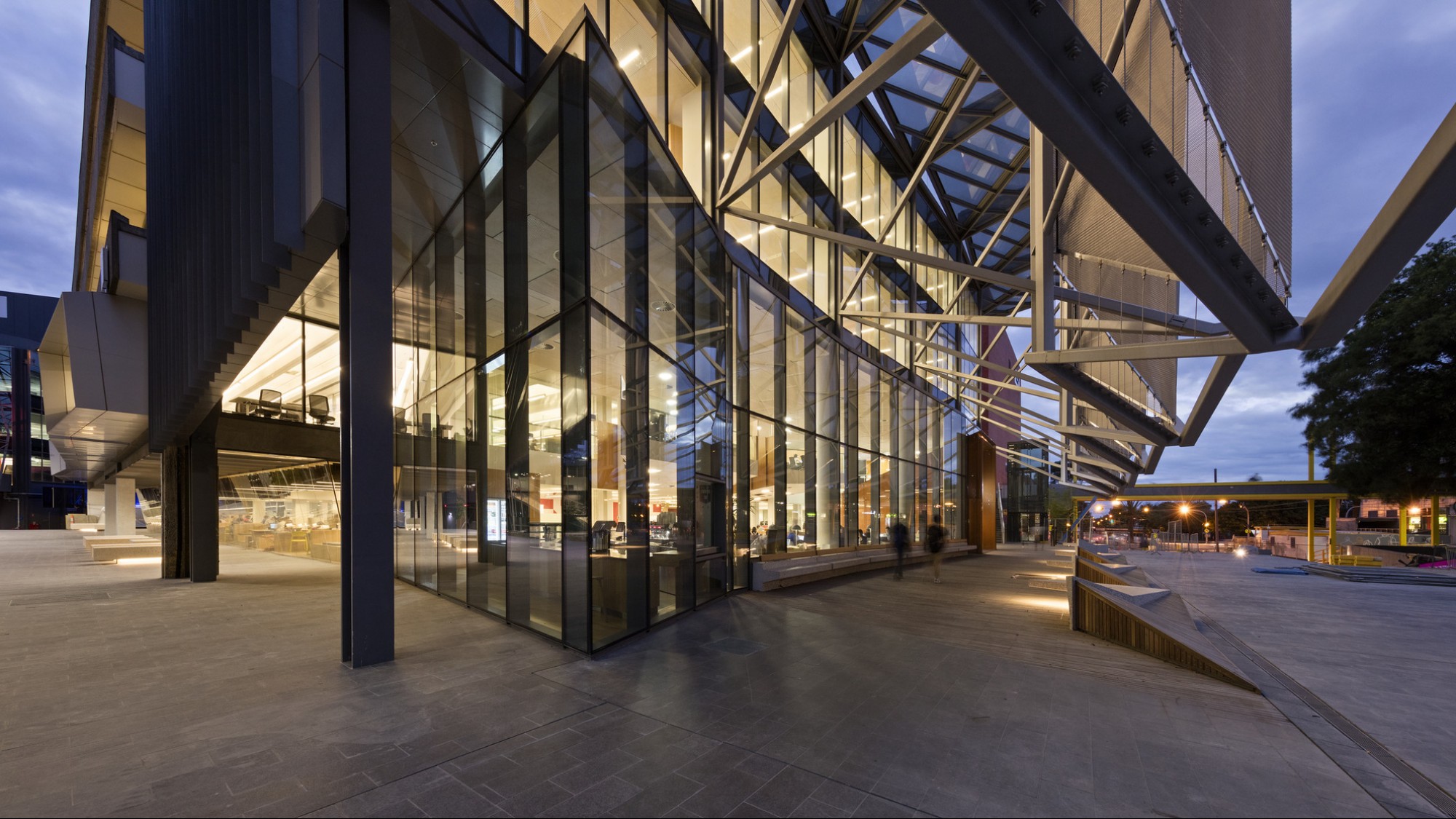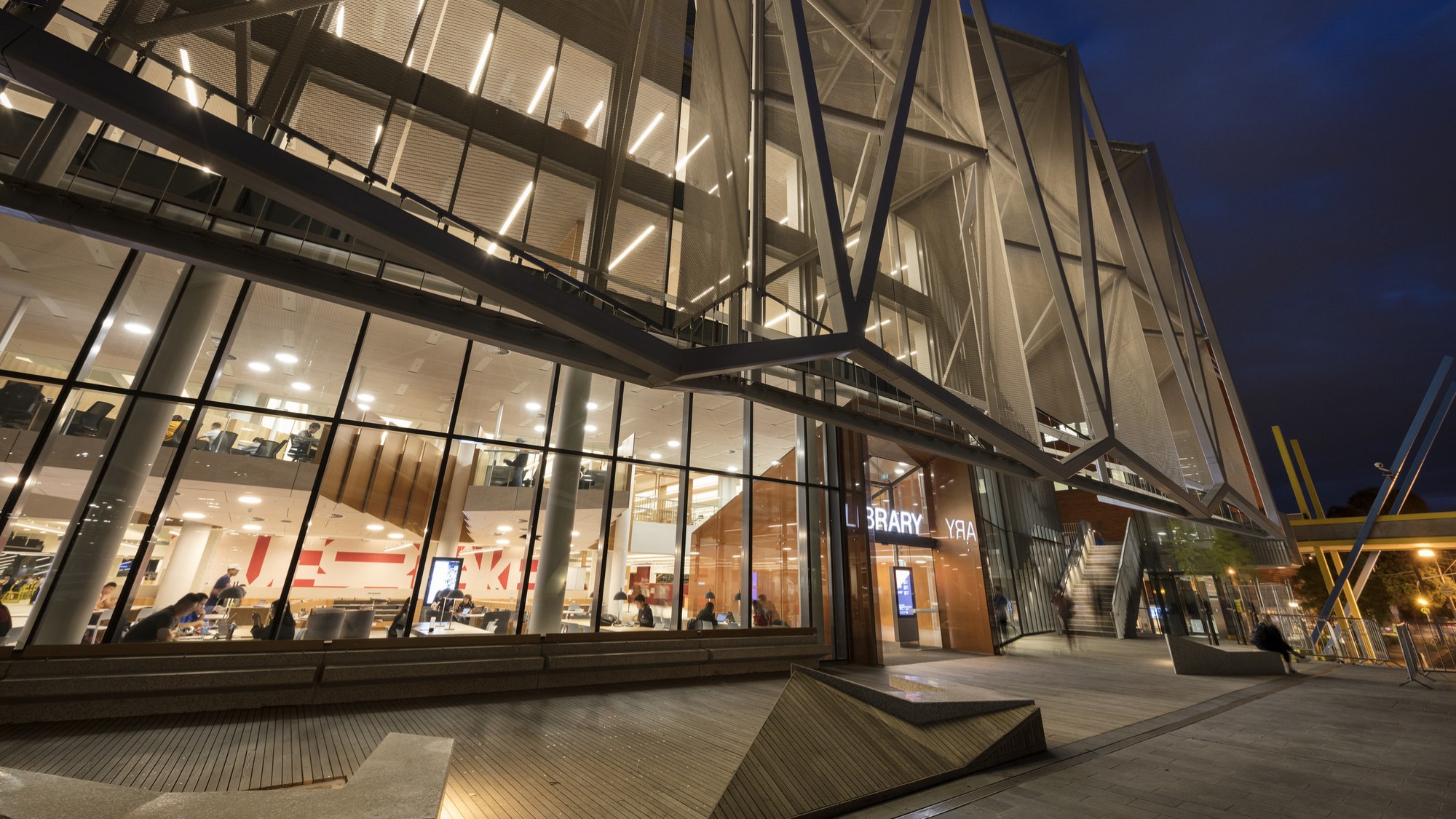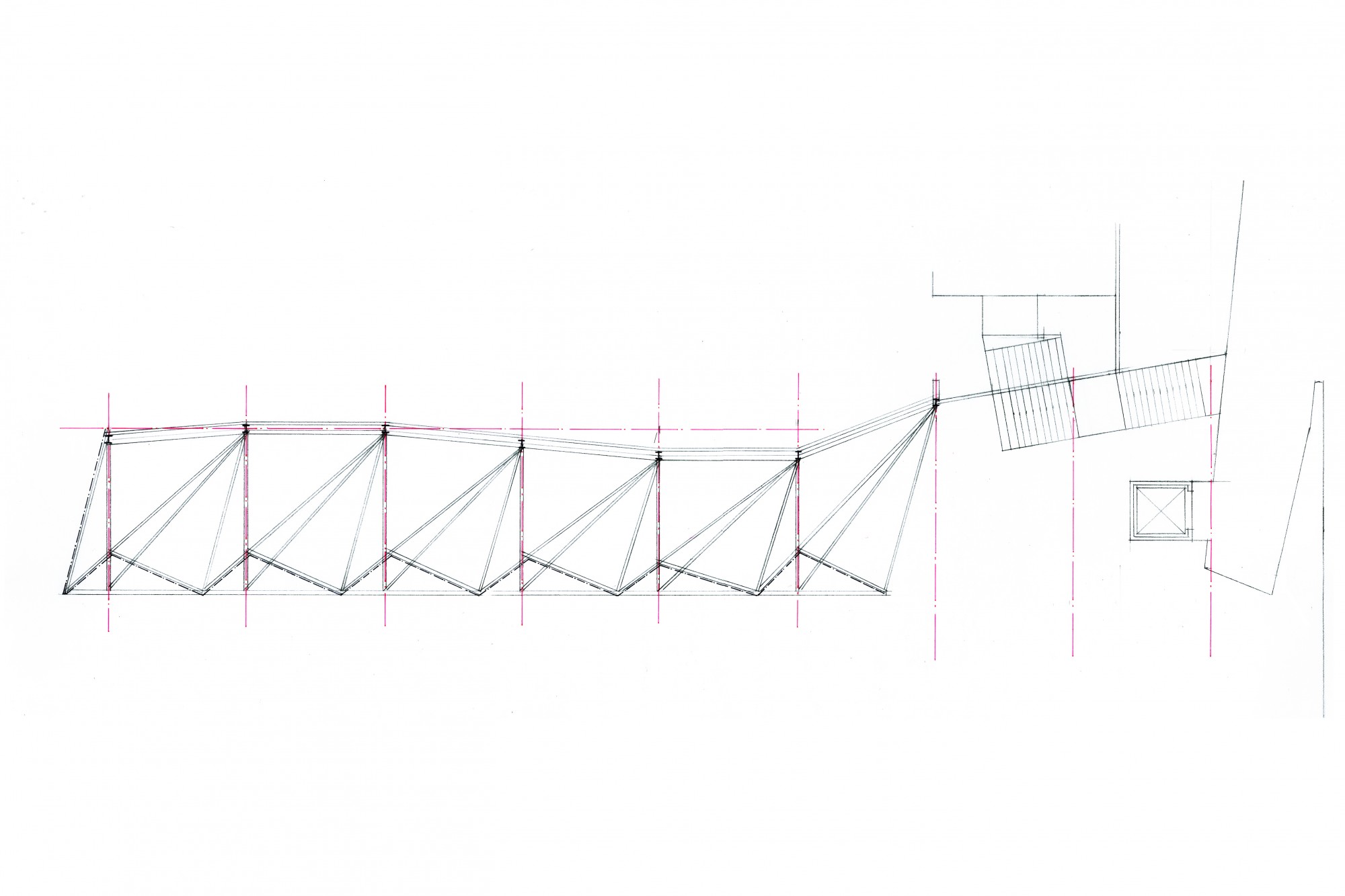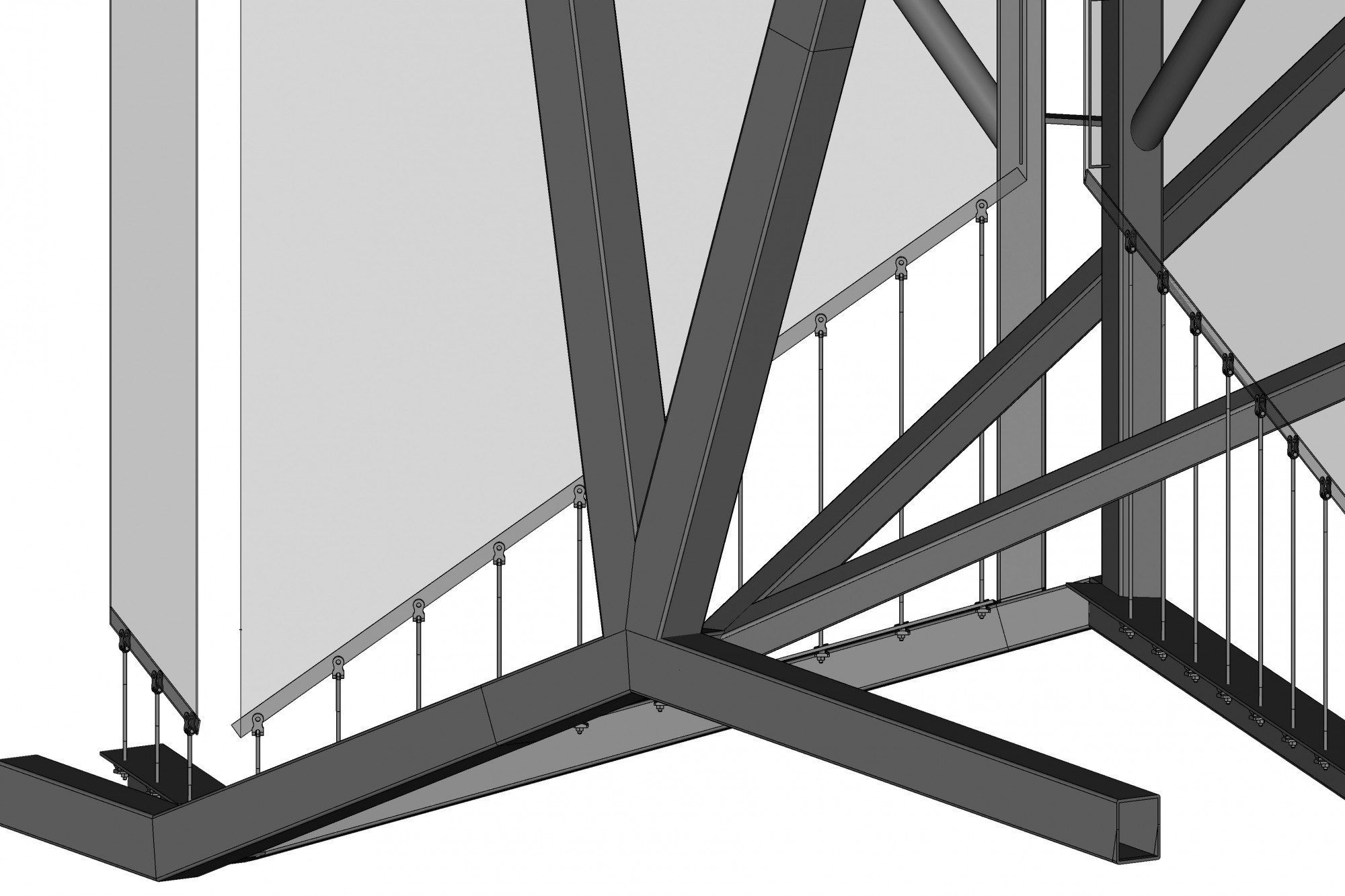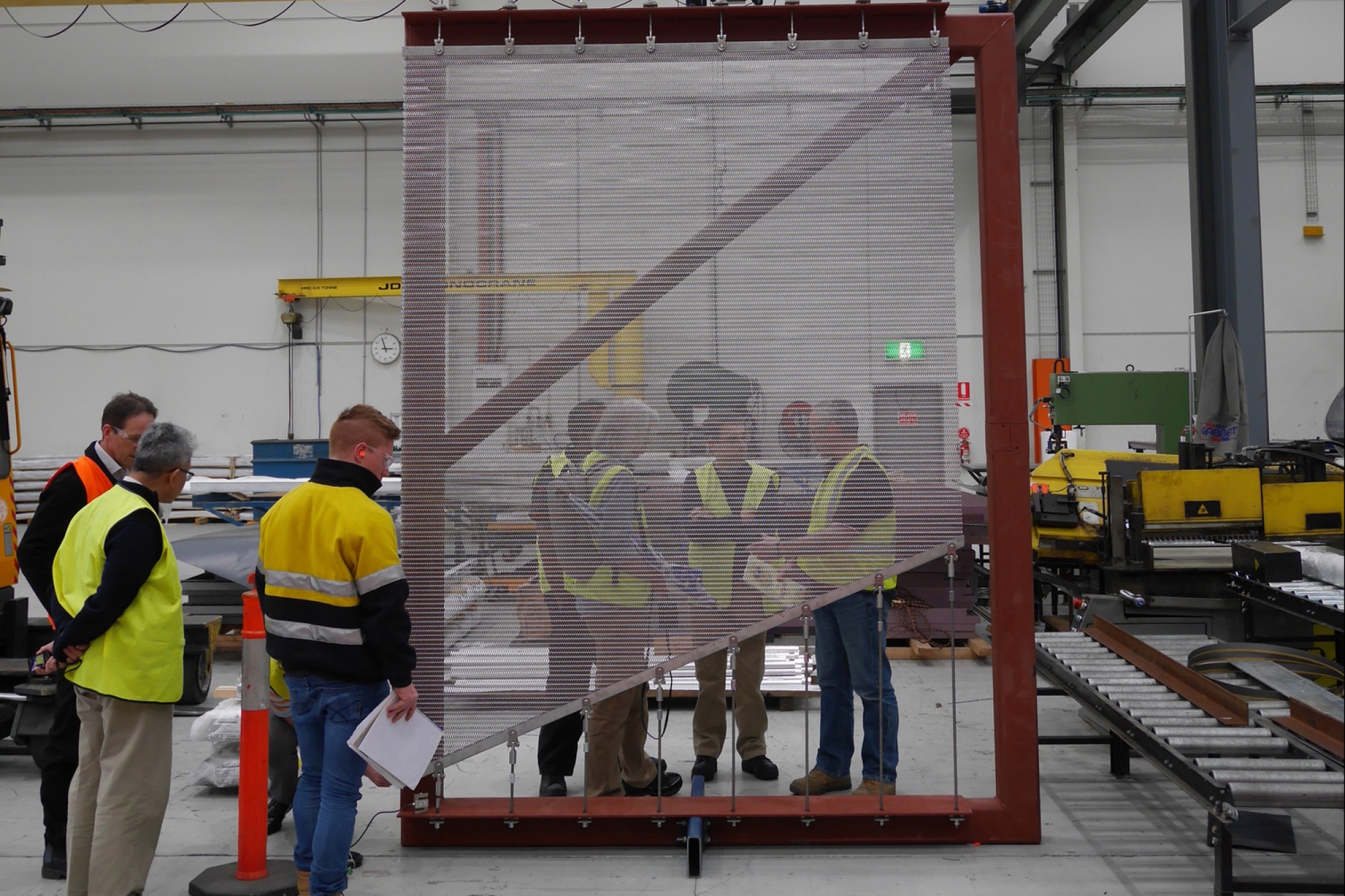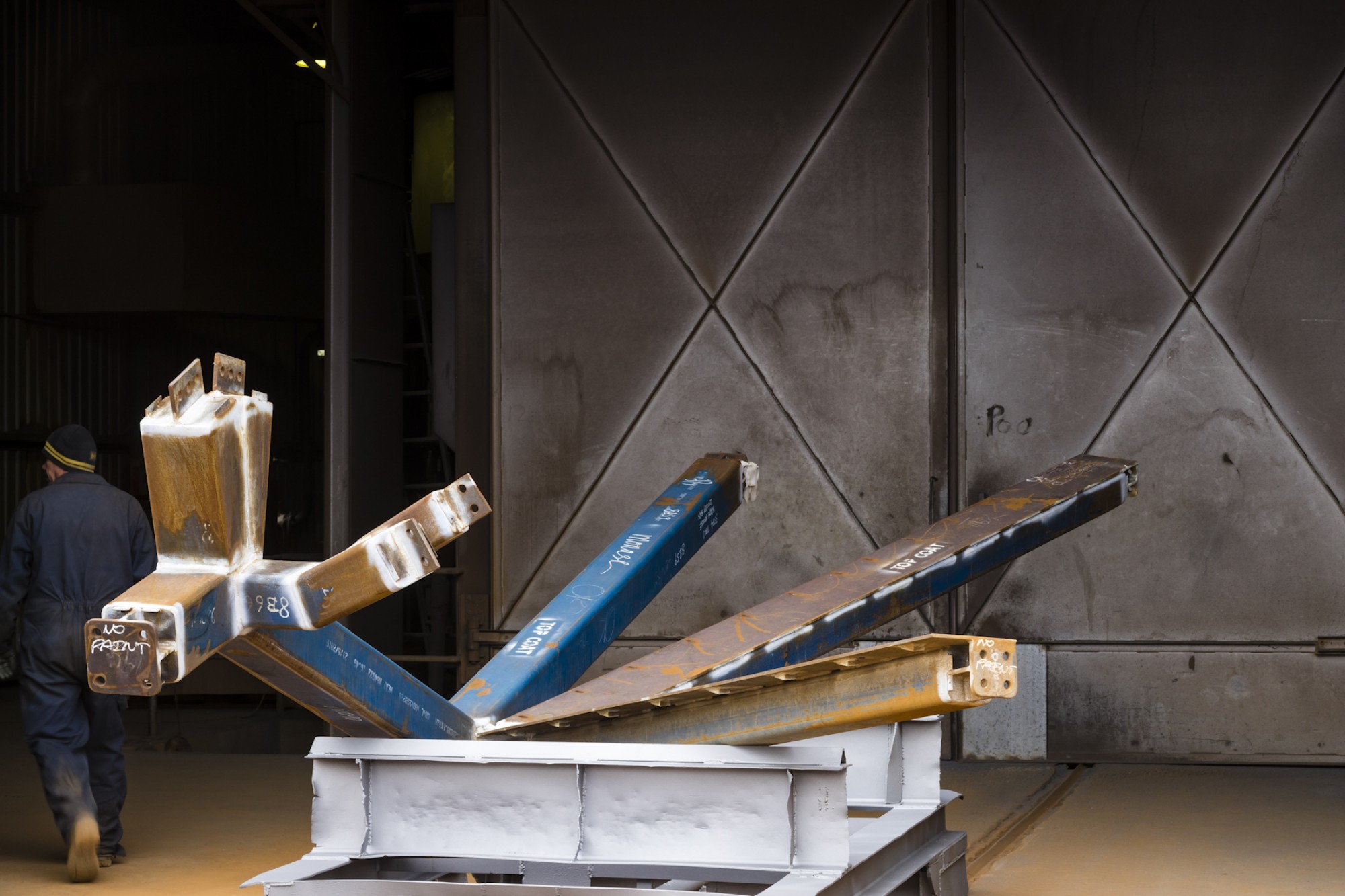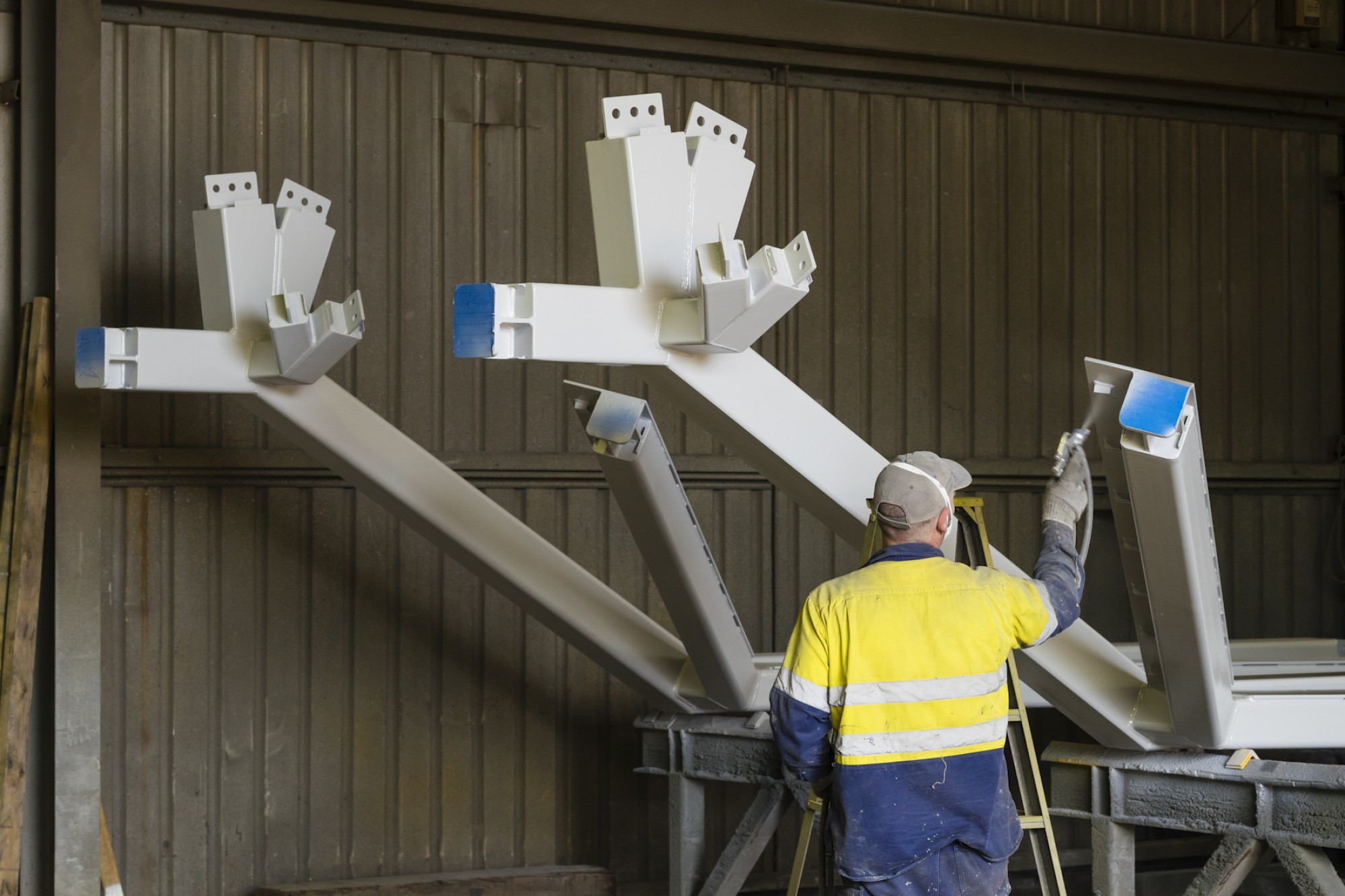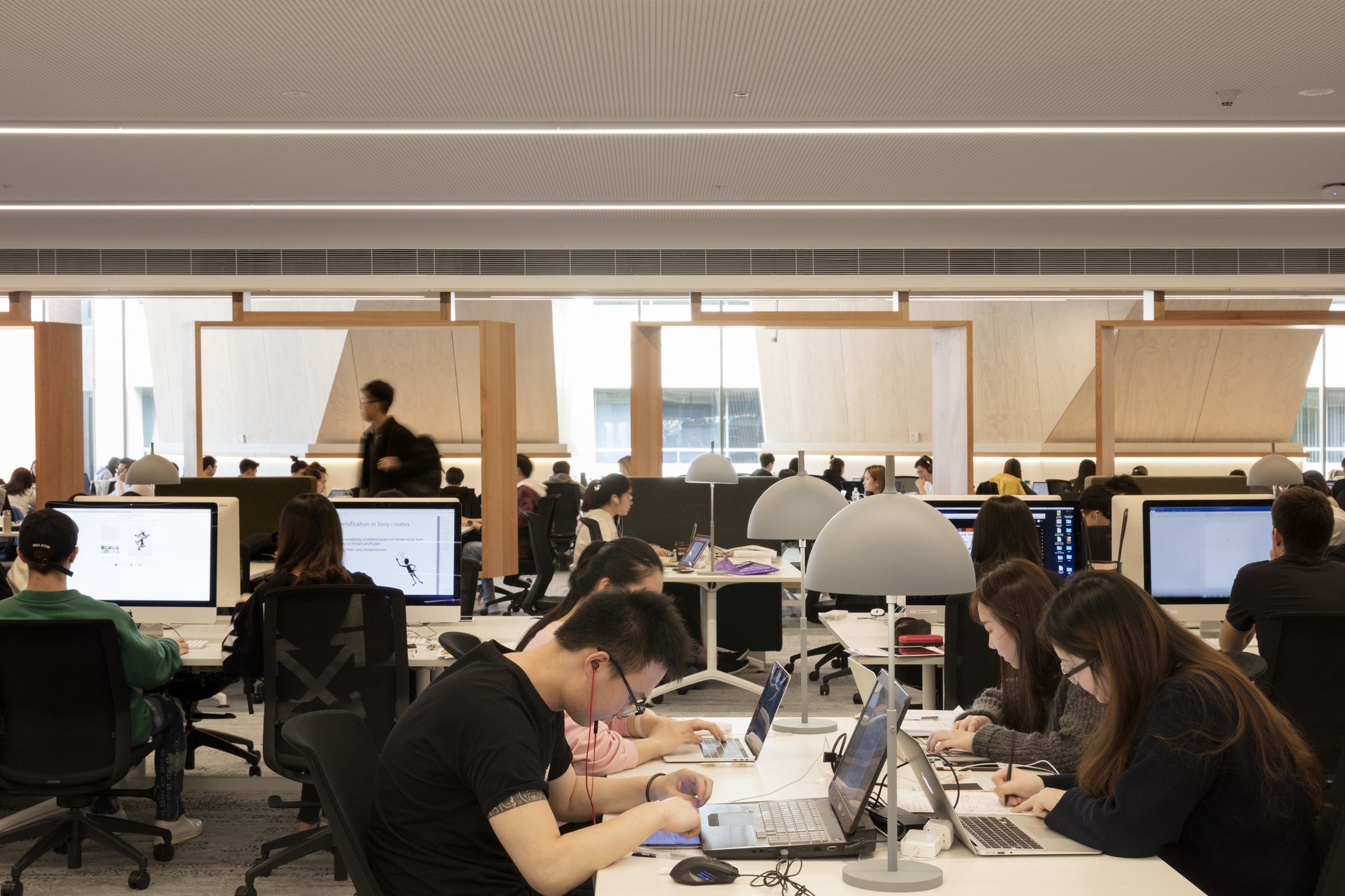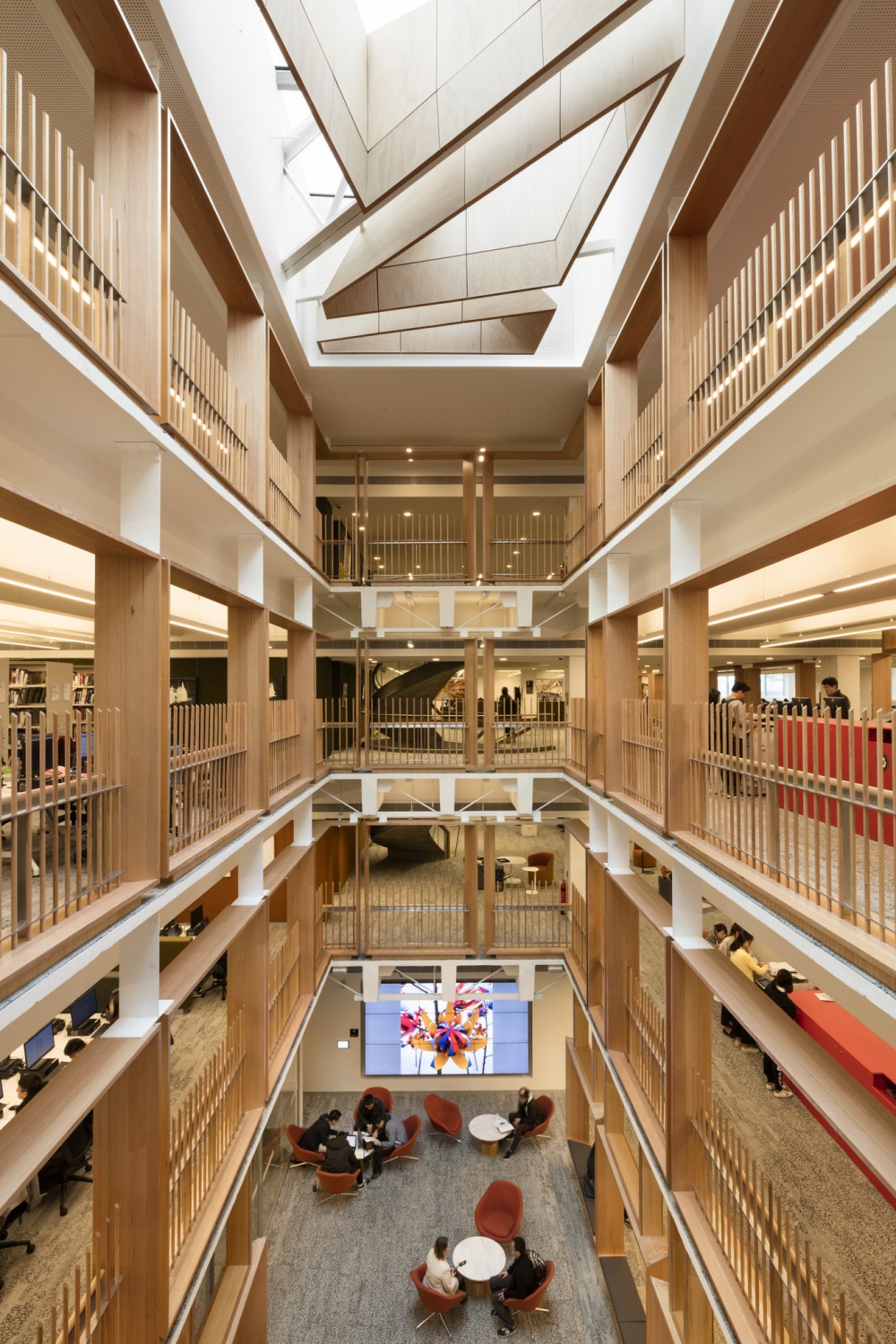Working with the existing conditions to create flexible spaces with clear views through large floor plates introduced additional complexity. But it also provided opportunities to refine the response, as architect Bill Kalavriotis explains.
“In just one example, but a powerful one, the void we cut through the existing building to create the atrium revealed some of the beautiful T-beams, which you didn't used to see at all; so that got put on show. Underneath the ad-hoc alterations made over the ensuing years, the existing building is quite beautiful, and there were a number of architectural gems we wanted to reveal and celebrate,” Bill says.
Modernising the building’s services while respecting that heritage was another crucial task, as interior designer Sharon Crabb explains.
“As the user population increased significantly, it was important for new services to be integrated seamlessly with the existing T-beams – access to power, data and AV was critical to the brief.”
The team's ability to seize opportunities throughout the construction process was important to the project’s success, Jasmin says.
“We would often be on site and see something that had only just been revealed. We would then quickly come together and assess how to enhance the way the existing fabric was expressed alongside our response to it,” she says.
Amanda also picks up on this theme of responsiveness.
“Briefing on a complex project isn't something that happens solely at the start; it's something that the client is on a journey alongside you. On this project, with the library being open and the staff on site throughout, it meant they were on the same page with us as the response evolved,” says Amanda.
“Holistically we are incredibly proud of what we’ve achieved with Caulfield Library,” Jasmin says.
“Much of the credit should go to Monash’s librarian, Cathrine Harboe-Ree, who has since retired but remains involved with the university in a research capacity. Every project needs a champion and she was one of the best we’ve worked with.”
